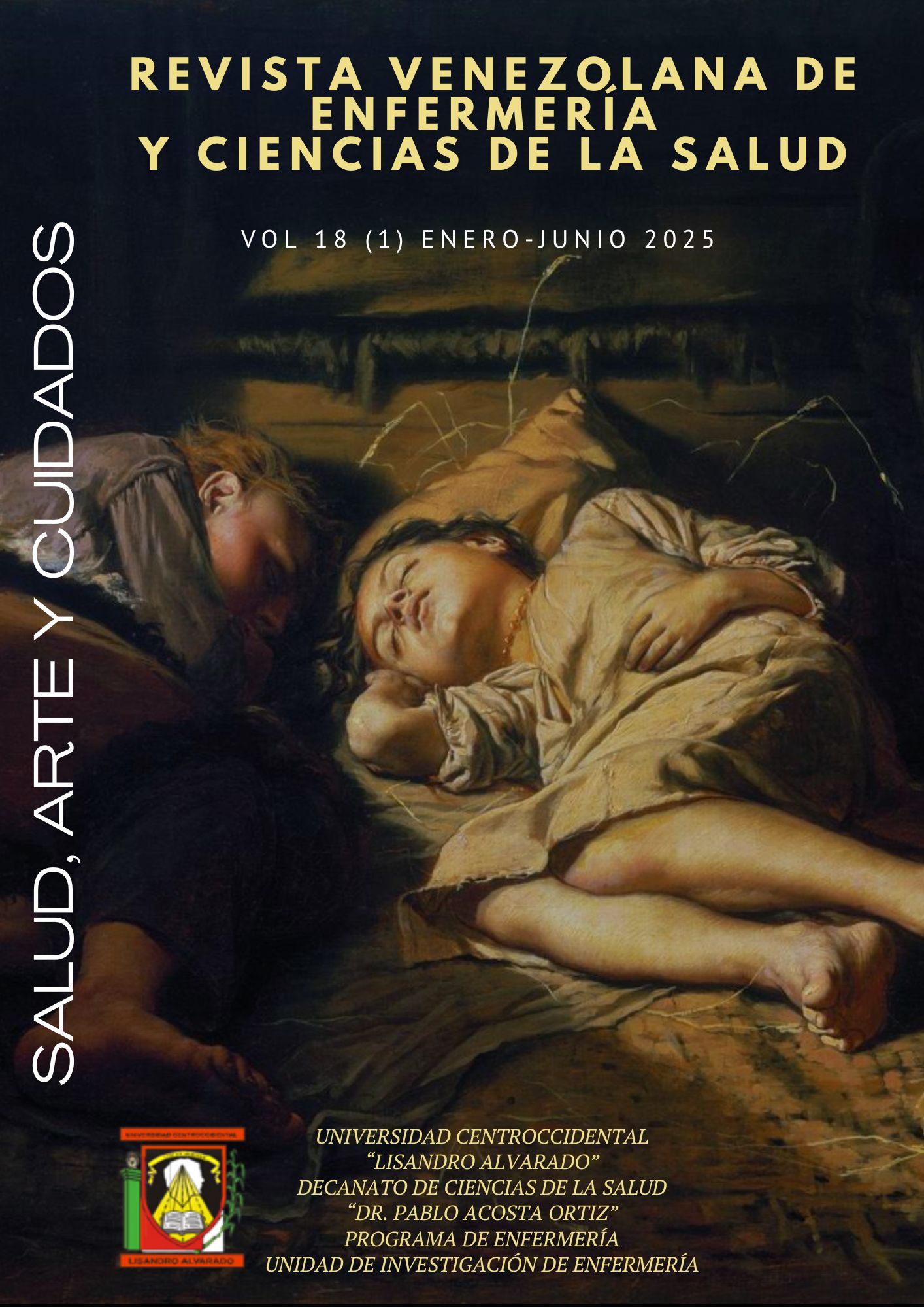Emergency Remote Teaching and Hand Hygiene Learning in Nursing Education
DOI:
https://doi.org/10.5281/zenodo.14734777Keywords:
Ensino remoto emergencial, Pandemia, Habilidades técnicas, Higiene das mãos, Enfermagem.Abstract
Hand hygiene is essential for reducing healthcare-related infections and ensuring patient safety in various healthcare settings. This report aims to describe the experience of ERE in learning about hand hygiene in nursing education. A guide for reporting educational interventions was used in a Brazilian higher education institution between April and May 2020. The design and implementation of the educational intervention were carried out voluntarily by 39 students, the majority of whom were female (72%). Although the students had access to a checklist of the appropriate steps for carrying out the procedure, only 70% performed it excellently. The creative and authorial production about learning the hand hygiene technique made it possible to understand the procedural content and value curiosity in the context of ERE, enabling the construction of educational processes supported by viable and feasible digital technologies after resuming face-to-face activities in nursing education.
Downloads
References
Pittet D; Allegranzi B; Storr J; Donaldson L. ‘Clean Care is Safer Care’: the Global Patient Safety Challenge 2005–2006. Int J Infect Dis 2006;10(6): 419-24. DOI: 10.1016/j.ijid.2006.06.001
Kim H; Park H. Compliance with infection prevention and control practice among prospective graduates of nursing school in South Korea. Int J Environ Res Public Health 2021;18(5):2373. DOI: 10.3390/ijerph18052373
Malhotra A; Kumar A. Breaking the COVID-19 Breaking the COVID-19 barriers to health professional team training with online simulation. Simul Healthc 2021;16(1):80-81. DOI: 10.1097/sih.0000000000000518
Martos-Cabrera MB; Mota-Romero E; Martos-García R; Gómez-Urquiza JL; Suleiman-Matos N; Albendín-García L et. al. Hand hygiene teaching strategies among nursing staff: a systematic review. Int J. Environ Res Public Health 2019;16(17):3039. DOI: 10.3390/ijerph16173039
Nascimento AAA; Ribeiro SEA; Marinho ACL; Azevedo VD; Moreira MEM; Azevedo IC et. al. Repercussões da pandemia COVID-19 na formação em Enfermagem: scoping review. Rev. Latino-Am. Enfermagem 2023;31:e3911. DOI: 10.1590/1518-8345.6414.3911
Oliveira MA; Veríssimo ML; Puschel VA; Riesco MLG. Desafios da formação em enfermagem no Brasil: proposta curricular da EEUSP para o bacharelado em enfermagem. Rev Esc Enferm USP 2007;41(esp):820-5. DOI: 10.1590/S0080-62342007000500014
Philips AC; Lewis LK; McEvoy MP; Galipeau J; Glasziou P; Moher D et. al. Development and validation of the guideline for reporting evidence-based practice educational interventions and teaching (GREET), BMC Med Educ 2016;16:237. DOI: 10.1186/s12909-016-0759-1
Organização Mundial da Saúde. Manual de referência técnica para a higiene das mãos. 2009. Disponible em: https://www.gov.br/anvisa/pt-br/assuntos/servicosdesaude/prevencao-e-controle-de-infeccao-e-resistencia-microbiana/ManualdeRefernciaTcnica.pdf [Consultado el 22.6.2024]
Brasil; Conselho Nacional de Saúde. Resolução nº 510, de 07 de abril de 2016. Disponible en: https://conselho.saude.gov.br/resolucoes/2016/Reso510.pdf [Consultado el 22.6.2024]
Barros R. Revisitando Knowles e Freire: andragogia versus pedagogia, ou O dialógico como essência da mediação sociopedagógica. Educ. Pesqui 2018;44:e173244. DOI: 10.1590/S1678-4634201844173244
Buchem I; Hammelmann H. Microlearning: a strategy for ongoing professional development. Elearningpapers 2010. Disponible en: https://www.researchgate.net/profile/Ilona-Buchem/publication/341323117_Microlearning_a_strategy_for_ongoing_professional_development/links/5ebabd26a6fdcc90d66ebfbc/Microlearning-a-strategy-for-ongoing-professional-development.pdf [Consultado el 22.6.2024]
De Gagne JC; Park HK; Hall K; Woodward A; Yamane S; Kim SS. Microlearning in health professions education: scoping review. JMIR Med Educ 2019;5(2):e13997. DOI: 10.2196/13997
Sozmen EY. Perspective on pros and cons of microlearning in health education. Essays Biochem 2022;66(1):39-44. DOI: 10.1042/EBC20210047
Nunes MP; Malagri CAN. O estado da arte sobre transformação digital e blended education. Educ Soc 2023;44:e274155, 2023. DOI: https://doi.org/10.1590/ES.274155
Freitas EO; Silva NR; Silva RM; Souto VT; Pinno C; Siqueira DF. Autoavaliação de estudantes universitários sobre seu desempenho acadêmico durante a pandemia da covid-19. Rev Gaucha Enferm 2022;43:e20210088. DOI: 10.1590/1983-1447.2022.20210088.pt
Almutairi M; Simpson A; Khan E; Dickinson T. The value of social media use in improving nursing students engagement: a systematic review. Nurse Educ Pract 2022;64:103455. DOI: 10.1016/j.nepr.2022.103455
Conde-Caballero D; Castillo-Sarmiento CA; Ballesteros-Yánez I; Rivero-Jiménez B; Mariano-Juárez L. Microlearning through TikTok in higher education. An evaluation of uses and potentials. Educ Inf Technol 2023;2:1-21. DOI: 10.1007/s10639-023-11904-4
Sankaranarayanan R; Leung J; Abramenka-Lachheb V; Seo G; Lachheb A. Microlearning in diverse contexts: a bibliometric analysis. TechTrends 2023;67(2):260-276. DOI: 10.1007/s11528-022-00794-x
Cathala X; Moorley C. Diffusion of social media in nursing education: A scoping review. Nurse Educ Today 2023;127:105846. DOI: 10.1016/j.nedt.2023.105846
UNESCO. Strategy on Technological Innovation in Education (2022-2025). 2021. Disponible en: https://unesdoc.unesco.org/ark:/48223/pf0000378847 [Consultado el 22.6.2024]
Santos JJ; Souza NS; Santo EE. Educação no Contexto da Pandemia: Percepções Críticas da Coordenação Pedagógica. EAD EM FOCO 2022;12(3):e1913. DOI: 10.18264/eadf.v12i3.1913
Published
How to Cite
Issue
Section

This work is licensed under a Creative Commons Attribution-NonCommercial-ShareAlike 4.0 International License.
Derechos del/de autor/es a partir del año de publicación
Esta obra está bajo la licencia:
Creative Commons Reconocimiento-NoComercial-CompartirIgual 4.0 Internacional (CC BY-NC-SA 4.0)
Las opiniones expresadas por los autores no necesariamente reflejan la postura del editor de la publicación ni de la UCLA. Se autoriza la reproducción total o parcial de los textos aquí publicados, siempre y cuando se cite la fuente completa y la dirección electrónica de esta revista. Los autores(as) tienen el derecho de utilizar sus artículos para cualquier propósito siempre y cuando se realice sin fines de lucro. Los autores(as) pueden publicar en internet o cualquier otro medio la versión final aprobada de su trabajo, luego que esta ha sido publicada en esta revista.







